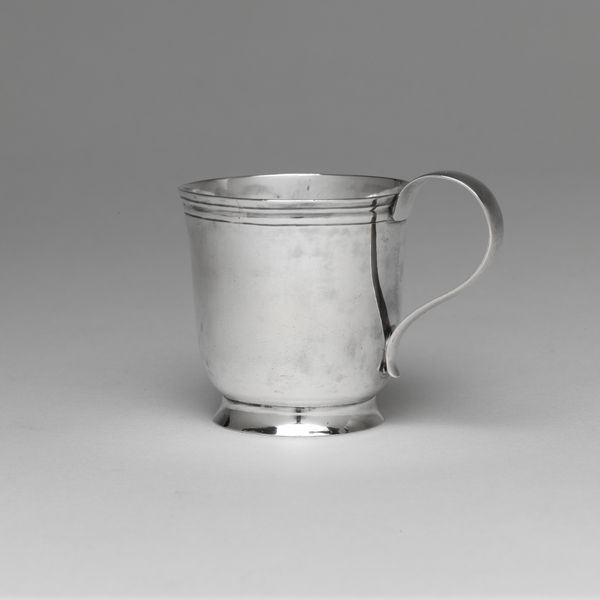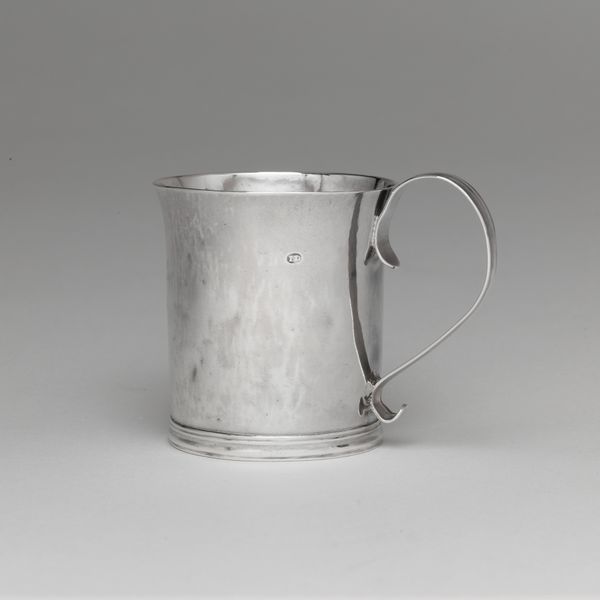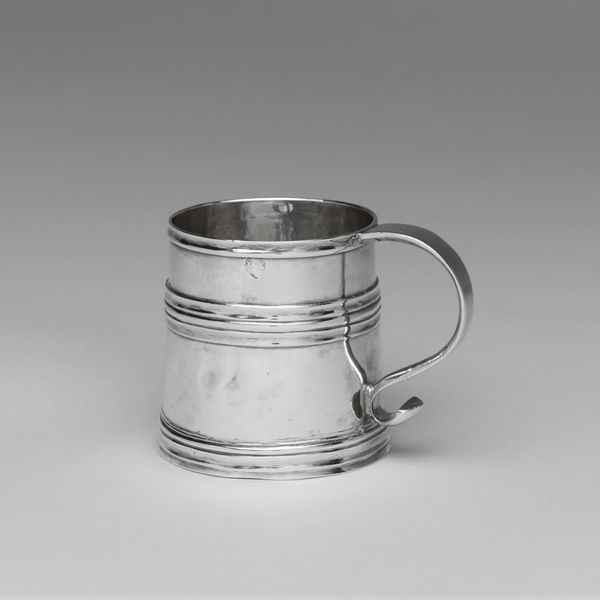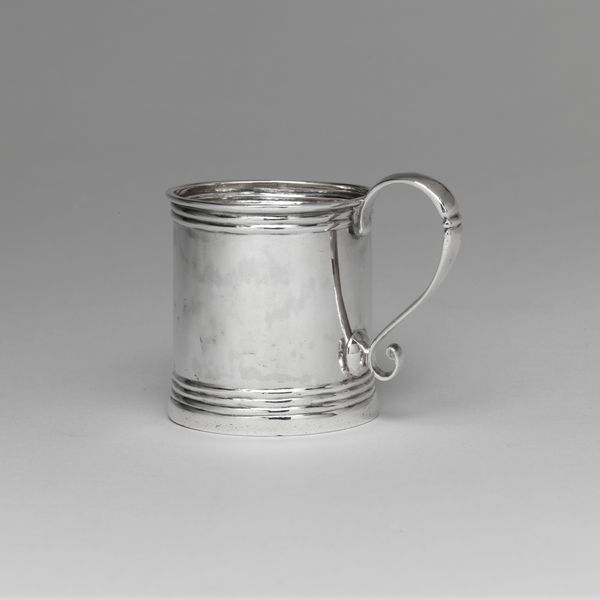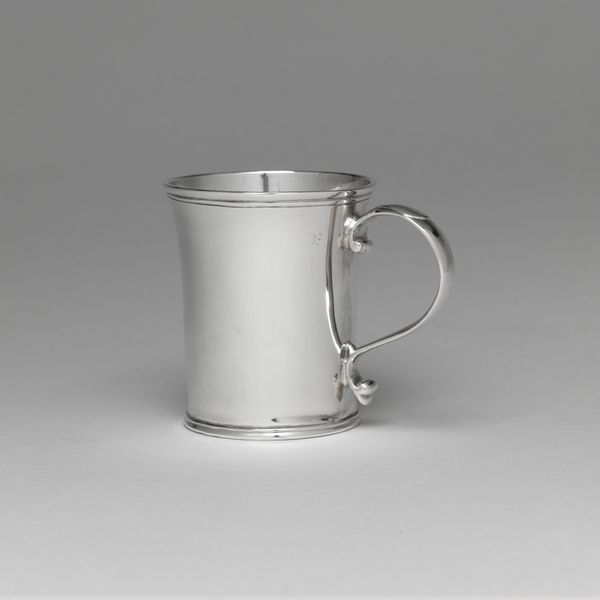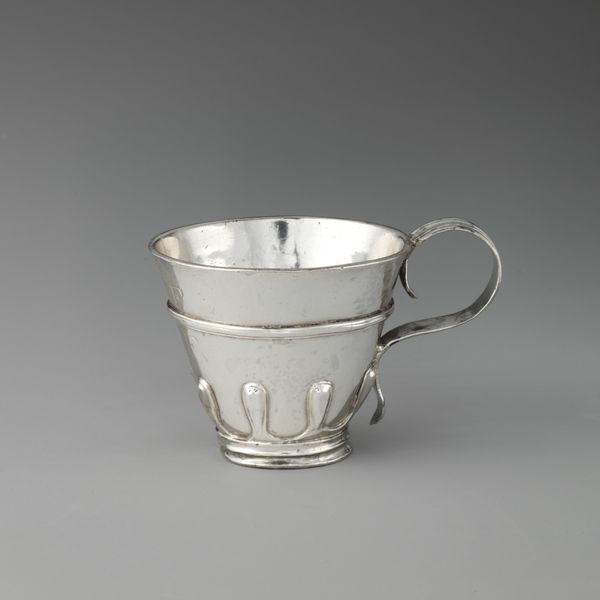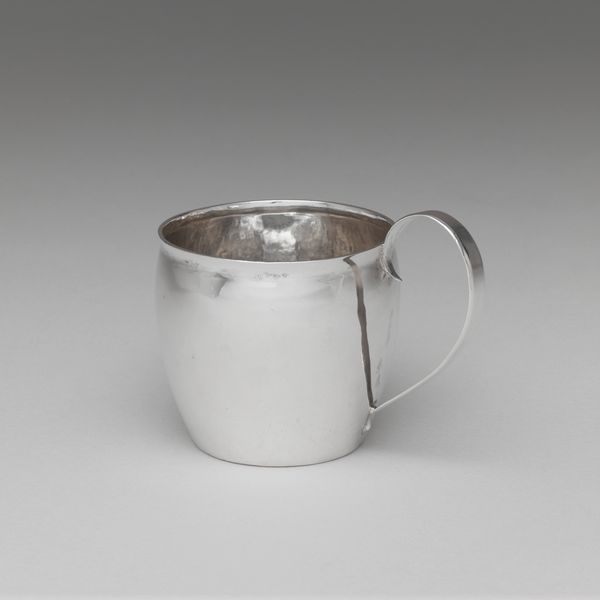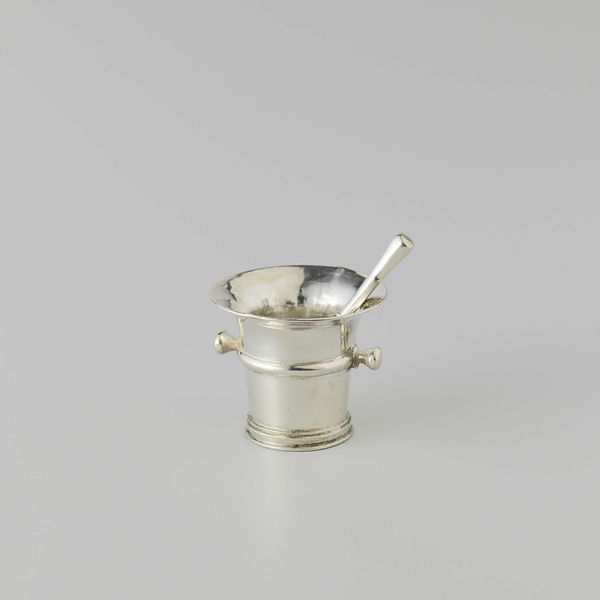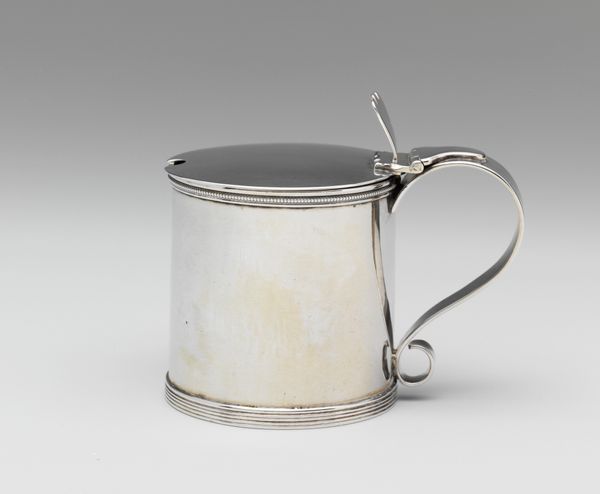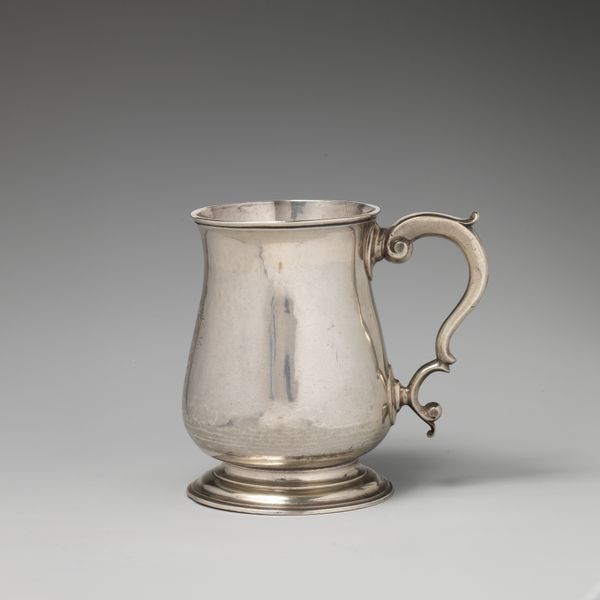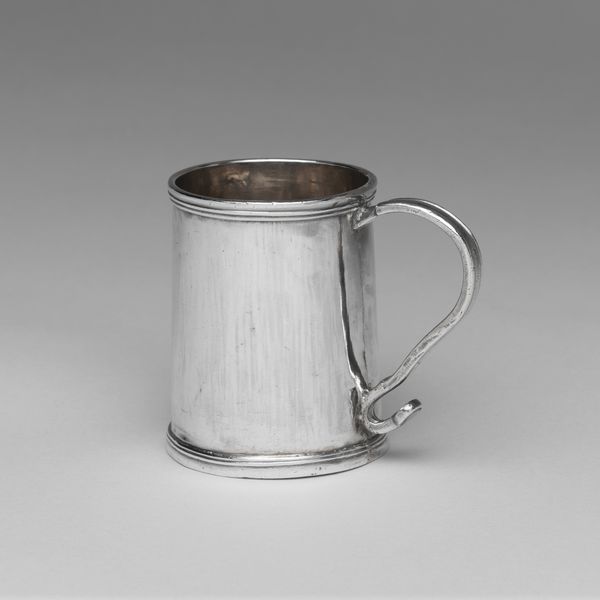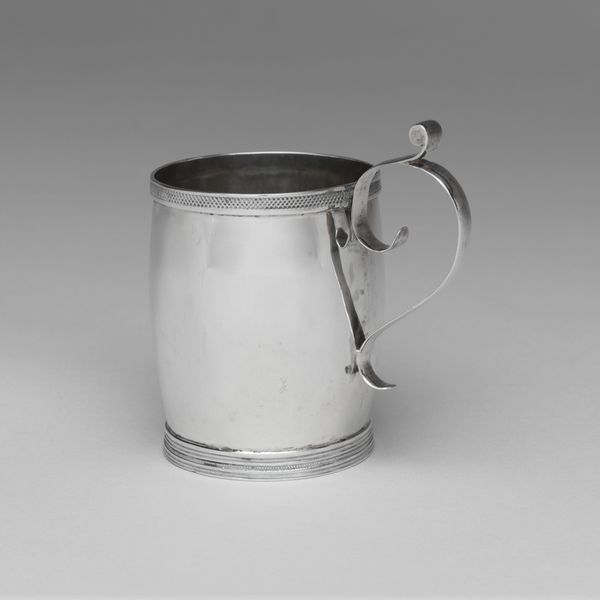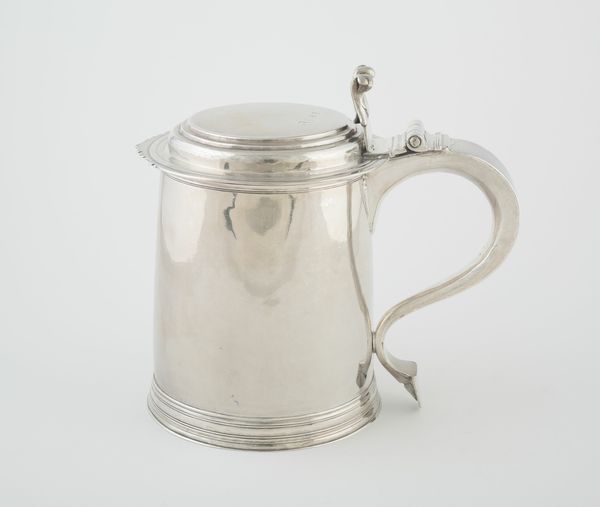
Dimensions: height 9.5 cm, height 8.4 cm, diameter 6 cm, width 9.5 cm
Copyright: Rijks Museum: Open Domain
Editor: Here we have "Cup with the portrait of the Duc de Berry," made after 1820 by Fabriek Dominique Denuelle. It's a stunning gold-toned metal piece currently residing in the Rijksmuseum. It looks so regal and ornate, but also surprisingly small. What stands out to you? Curator: I’m particularly interested in the materials and methods used in its creation. This isn’t just a decorative object; it’s a product of specific labor and economic systems. How was the metal sourced and processed? Who were the artisans involved in crafting this elaborate cup? These questions are as important as its aesthetic qualities. Editor: That's a great point. I was so caught up in its beauty that I didn't really consider the industrial processes behind it. The "Fabriek" in the maker's name suggests something of a larger, perhaps even proto-industrial, scale. Do you think this shifts our understanding of its value, knowing it might not have been solely created by a single, named artist? Curator: Absolutely. It disrupts the romantic idea of the solitary genius artist. The "Fabriek" signifies a division of labor, and the cup becomes an object reflecting both artistic skill and industrial production. The materials, the gold-toned metal specifically, suggest wealth and status, pointing to consumption within a particular social class. Where did the raw material come from, and how did its value get assigned? Editor: That makes me think about who might have actually used it. Was it really the Duc de Berry himself? Curator: Precisely. Ownership and use are key. The portrait connects it to the aristocracy, but the object’s existence speaks to broader systems of patronage and the social function of art. It’s more than a pretty cup; it's evidence of social structures and economic realities. Editor: Wow, I never would have thought of it that way. Seeing art as a result of labour and material choices makes so much more sense now. Thanks for that perspective! Curator: And for me, considering its place in decorative arts brings into question the perceived hierarchy between craft and so-called ‘fine art’.
Comments
No comments
Be the first to comment and join the conversation on the ultimate creative platform.
